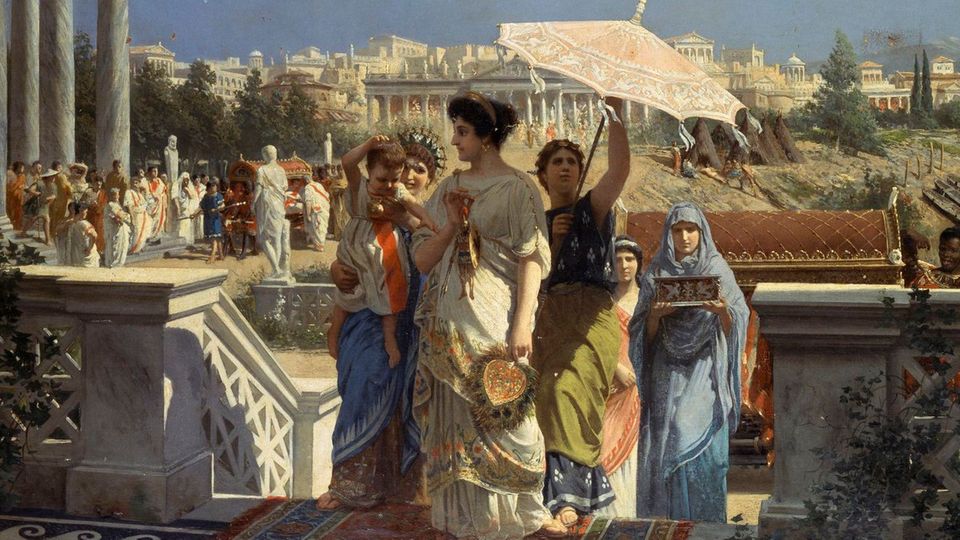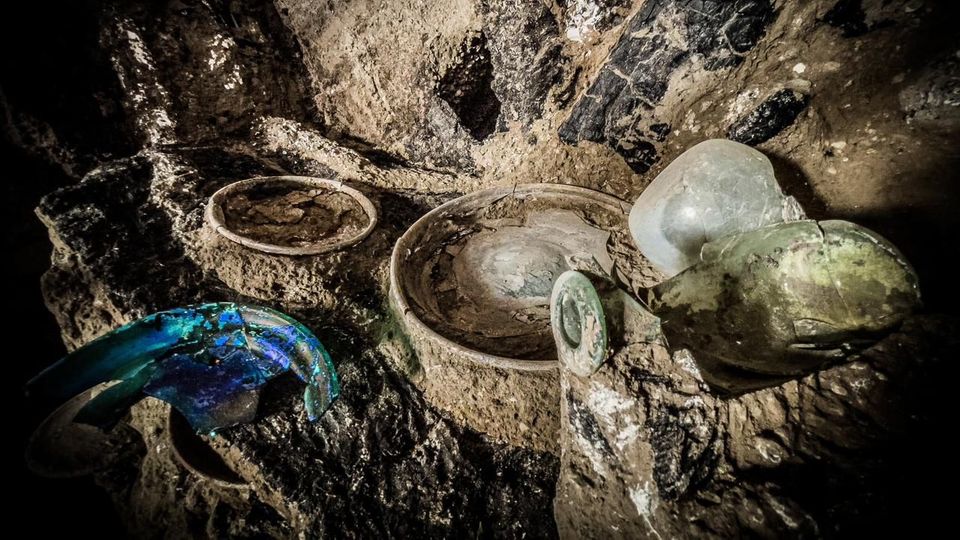excavation
The Romans loved it fiercely – chemists reconstruct 2000-year-old perfume
In addition to the bottle, three amber beads were found in the urn
© José Rafael Ruiz Arrebola / Commons
2000 years ago a Roman woman took her perfume to her grave. By coincidence, the fragrances survived the long time. Now the main component of the fragrance could be determined. The woman loved a scent that had to travel halfway across the world to get to her.
In 2019, a Roman perfume bottle was found in the southern Spanish town of Carmona. For 2000 years he lay in a tomb. Well protected: the quartz glass bottle was in a lead box. Inside were found the perfume and ashes of its bearer, a woman of only about 40 years of age.
Scent from Southeast Asia
When the bottle was opened, however, the allure of its former scent was gone, but chemist José Rafael Ruiz Arrebola of the University of Córdoba in Spain was able to reconstruct the contents. As he did so, he encountered a familiar scent. One of the ingredients is patchouli. The heavy scent is still a component of perfume today, but it was not known until now that the Romans also used it. Because the fragrance had come a long way. Patchouli is derived from a tropical plant found in Southeast Asia called Pogostemon cablin. The essence must have been correspondingly expensive. “Back then, perfumes were reserved for high society.”
Sealed with bitumen
A lot of effort was put into ensuring that the dead woman could take her scent with her to the afterlife. The quartz bottle itself was an expensive luxury item. The dolomite lid was bonded airtight to the bottle with bitumen. Still, the essence dried into a lump. The scent could only be determined because of the bitumen. This is because volatile organic substances are bound in the tough material. “Chemically, bitumen behaves like carbon, which is the best adsorbent for organic compounds,” says Ruiz Arrebola. “Once adsorbed, the molecules are no longer volatile and cannot escape.”
“The fact that the bottle was in a closed place and in total darkness allowed the perfume to survive to our days,” says Ruiz Arrebola. “Had the tomb collapsed and light come in, the perfume would not have survived because light is the worst enemy for these types of chemicals.” It is not known whether patchouli was used by the dead in everyday life, or whether it was only intended as a perfume for burials.




